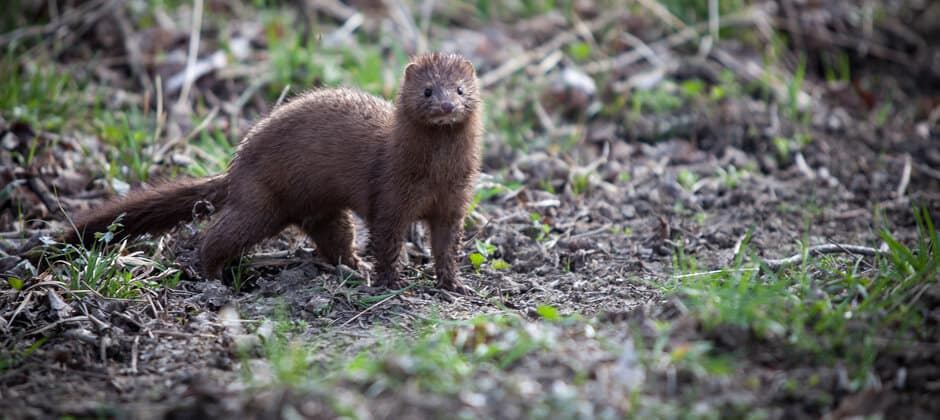Share this article
In minks, microbiomes aren’t created equal
Animals’ inside world can tell researchers a lot about how they interact with the outside world.
While studying gut microbiomes, which is still an emerging area in wildlife biology, researchers have found that the microbes in digestive tracts can yield important insights into how species handle infections, what foods they specialize on, even how their brains develop. These interactions can be complicated, though, and researchers recently found they can be even more daunting than they already knew.
“We think about our skin as our primary direct interface with the world, but our gut is where we put pieces of the outside world into our bodies,” said Erin McKenney, an assistant professor in applied ecology at North Carolina State University. “So our relationship to microbiomes has really shaped our evolution as animals.”
McKenney wanted to validate researchers’ collection methods. Focusing on minks, she and her colleagues wanted to see if time and temperature affected how accurately fecal samples depicted the animals’ microbiomes. But as they looked at the data, something else caught them by surprise—and forced them to rethink how to study microbiomes altogether. Male and female minks had totally different microbiomes, despite eating the same food. A few fecal samples, they realized, couldn’t tell the whole story.
“We thought it was going to be cut and dry,” said McKenney, a co-author on the study published in the Journal of Mammalogy. “We were just looking for the changes over time with temperature treatments. That was really exciting.”
Previous wildlife microbiome research had mostly focused on herbivores and omnivores, which are much more numerous on the landscape. Carnivores are harder to find in the wild, and their microbiomes are harder to study.
“They live at lower population densities and need larger home ranges,” McKenney said. “The characteristics that make carnivores compelling also make it harder to study their microbiome. They tend to be elusive and live in smaller social groups.”
But American minks (Neovison vison) are easy to find—at least they are on mink farms, where they’re raised in captivity for their pelts—and that gave the team an ideal site to conduct their research. Because the minks were kept in captivity, the team, led by Diana Lafferty, with Northern Michigan University, could control what they ate and collect fresh fecal samples as soon as they were provided.
The team collected the scat and divided each sample in two. They placed half of the sample in the cold of an Upper Peninsula winter. The other half they put inside a greenhouse at about 70 degrees Fahrenheit, replicating summerlike temperatures biologists might find out in the field.
They compared changes in the fecal microbiomes over five days, and found no significant differences in microbiomes from samples collected in cold and warm temperatures or over time. That was good news. Even if researchers collected old, dried-out samples from the wild, it seemed, they could still accurately analyze gut microbes.
However, they found dramatic differences between the microbiomes of male and female minks. The team isn’t sure yet why this is the case, McKenney said, but it suggests that using microbiomes to understand a population is harder than analyzing a few samples.
Based on the amount of variation the researchers detected among the 10 mink they studied under controlled conditions, the researchers calculated that they would need to collect up to 1,000 samples to detect about a 50% difference in microbial diversity in field conditions. “If you go to the wild to free-ranging populations without standardized diets or controlled environmental conditions, I imagine you would need even more samples,” McKenney said.
That throws a wrench into biologists’ ability to understand an elusive species’ microbiome, she said, but it also sets the stage for more informed research.
McKenney and her colleagues are keeping that in mind now as they study microbiomes in other carnivores, like black bears (Ursus americanus), Alaskan brown bears (Ursus arctos gyas), martens (Martes americana) and fishers (Pekania pennant).
“We’re trying to slowly crack open this wicked nut,” she said.
Header Image: Female and male American minks have different gut microbiomes, raising new questions about how to understand the data. Credit: Kary Nieuwenhuis








